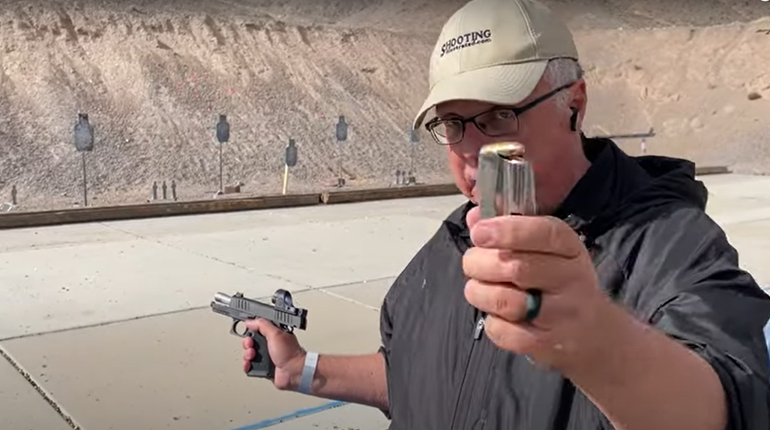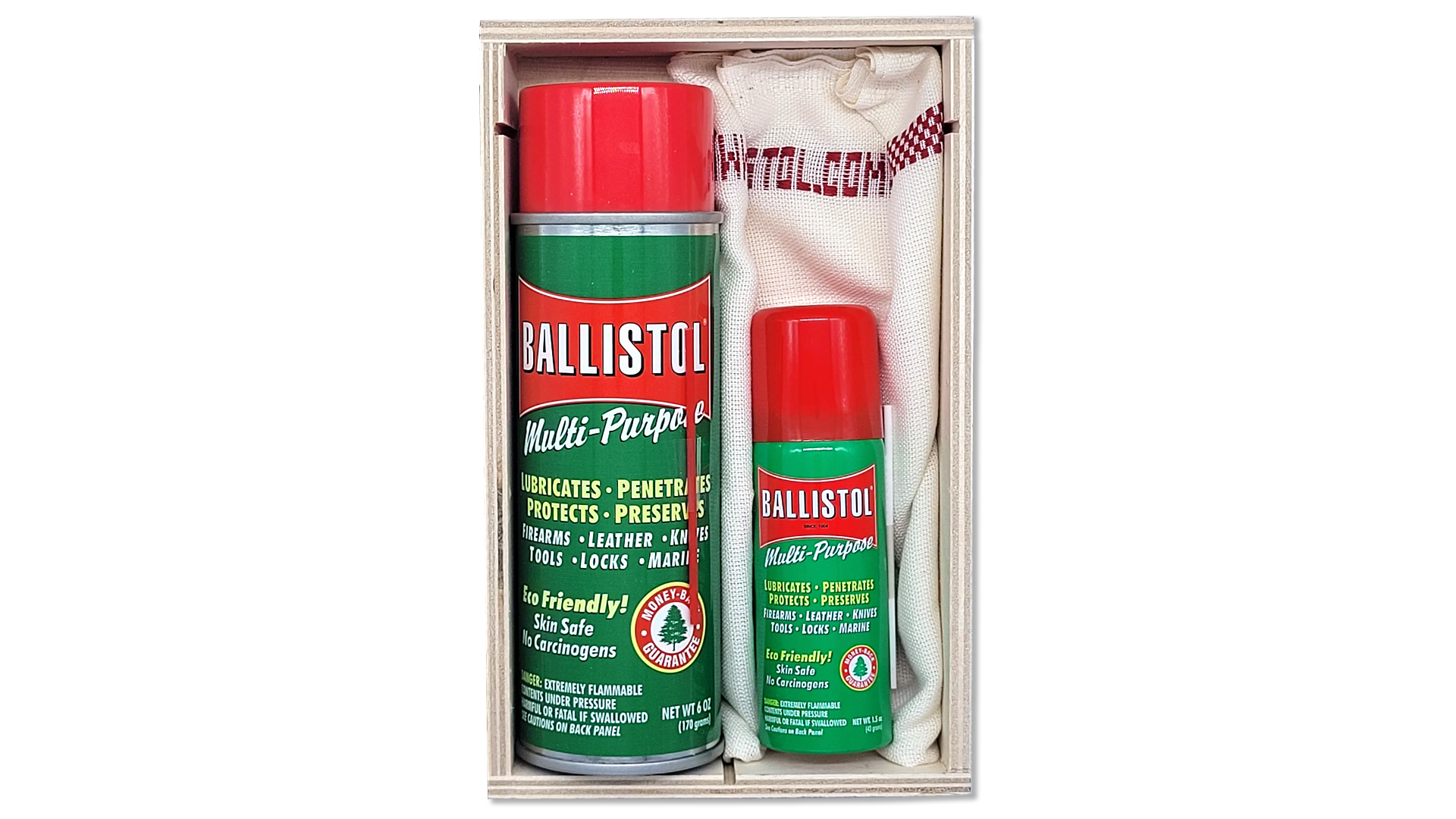
As galloping express riders and ringing church bells spread across New England during the early hours of April 19, 1775, thousands of farmers and tradesmen carrying a variety of firearms poured out of their homes and headed toward Lexington and Concord to intercept the British Army column approaching from Boston. America’s War for Independence had begun. Yet, despite their deeply held convictions, these provincials had no realistic chance to win.
In opposition against the finest army and navy in the world, the Colonists possessed no trained armed forces, no established central government, no financial reserves and no industry to supply their effort. The Northern American Colonies had been settled to enrich the mother country by exporting raw materials to England’s factories and then serve as a market for their finished goods. Thus, the manufacturing facilities, such as those needed to produce arms and support a war, did not exist this side of the Atlantic.
As a young society gripped in a pioneering spirit, however, the rebels possessed an explosive vitality and ability to innovate. How they defied the impossible and drew upon this “new world energy” to successfully equip their spawning armies is one of the untold stories of our incredible path to freedom.
Militia Organizations: In the beginning, the only existing American military groups were the individual militia systems of each colony. These units were usually identified by their town or county locations and included all men from 16 to 60 years of age. Being loosely structured, they met locally to drill several days each year, but lacked the discipline to stand against professional troops in open battle.
Each member was equipped with a firearm plus a bladed back-up arm, such as a short sword, belt axe or bayonet. Yet, unlike the mother country’s own militia regulations—in which the authorities controlled the arms and stored them together in a secured central location between muster days—each American had to provide his own arms and keep them at home. The gun specifications, in turn, were vague. Massachusetts, for example, required only “a good fire arm.” Because Britain had done little in past years to furnish her Colonists with military arms, the militia employed a wide assortment of smoothbore muskets, carbines, fusils, trade guns, light or heavy fowling pieces, and rifles—of varied lineages and bore sizes.
In addition, as the new United Colonies hurriedly attempted to create a regular army by enlisting militia members into Continental Line regiments, many of the recruits left their personal arms at home for the hunting demands and physical protection of their families. When Washington arrived at Cambridge opposite Boston in July 1775, he found an estimated 15 percent of the troops without firearms and many others with arms not capable of military field service.
Initial Arms Sources: The immediate American needs had to be satisfied quickly by obtaining existing guns. The provincials proceeded to raid local arsenals, confiscate Loyalist guns, purchase civilian arms, seize British supplies, acquire cast-off or surplus firearms in Europe through independent agents and repair or cannibalize damaged pieces.
Efforts were also implemented to make use of the limited production capabilities within the Colonies. An estimated 2,500 to 3,000 gunsmiths were available, of which perhaps two-thirds favored the American cause (Moller I). Early in 1775, local “committees of safety” were already placing orders with those makers. (Some modern collectors describe all American Revolutionary War muskets as “committee of safety” guns. This term should only refer to those arms produced under a “committee” contract. Few survived and most were not identified by the makers who feared retaliation by Royal authorities.)
Within a year, the committees had largely been superseded by the states, most of which raised and equipped their own regiments during the war. The Continental Congress also began issuing multiple contracts through agents of its Board of War. The rebels’ early specifications followed the British Land Pattern with its pinned .75-cal. barrel, but the stipulated barrel lengths varied from 42 to 46 inches and recommended bayonet blades ranged from 14 to 18 inches. Surviving examples further show that even these official dimensions were routinely disregarded to expedite production.
Foreign Aid: Eventually the patriots’ desperate shortage of arms would be relieved by supplies from abroad. Yet this aid raised even more complications. Beginning in 1777, shipments began to arrive from France, as well as the Netherlands, Belgium and Spain. Mixed within these consignments, however, were firearm patterns of virtually all Western European nations, as most of the foreign arsenals supplying American aid had within their inventories captured, abandoned or damaged arms from multiple enemies of previous wars. American agents, such as Benjamin Franklin, Silas Deane and Arthur Lee, also arranged large private deliveries of assorted armaments from Europe’s professional arms dealers. Such an overwhelming variety of gun patterns in the American ranks were further aggravated by a substantial number of odd musket components within the cargos.
American Production: The existing provincial gunsmiths included a number of master craftsmen, but the need for volume soon overrode artistry as their primary objective. The most time-consuming work was making locks and barrels. Even before hostilities began, it was usually more cost effective for the makers to import those two components in bulk and make the remaining parts locally. This new flood of used parts changed most gun production to mixed assembly and repair. The author has found as many as five countries represented on a single American musket. Some of these reused parts even had portions cut off to reduce inletting work.
Although the typical American-made long arms favored the familiar British Brown Bess Land Pattern during the early war years, they shifted toward French designs and components as foreign aid expanded and France’s serviceable muskets re-equipped most of the Continental Line. The transition came slowly, however, for the maintenance and repair of arms returned from active field use added to the gunsmiths’ burdens.
As late as 1778, General von Steuben wrote of Washington’s line regiments following his arrival at Valley Forge in February, “The arms were in horrible condition, covered with rust, half of them without bayonets, many from which a single shot could not be fired … muskets, carbines, fowling pieces and rifles were seen in the same company.”
Centralized Locations: To cope with these continuing demands, the individual states and the Congress began to establish larger and more centralized storage/repair facilities. By 1778, there were six Continental arsenals located in Pennsylvania (Philadelphia, Carlisle, Lancaster), Maryland (Head of Elk), New York (Albany), and Virginia (Manchester). (Moller I). In 1780 Congress created the Philadelphia Supply Agencies, which included The French Factory, The Continental Armory, and related parts suppliers as major repair and production sources centered in that city. Also by this late date, Congress had enough inventory to sell surplus arms to the states which, in turn, had expanded their own capacities. Virginia founded a State Gun Factory in Fredericksburg (1775), but most of the states resorted to encouraging private gunmakers in favorable locations, such as Pennsylvania’s Lancaster County, Connecticut’s Goshen and Virginia’s Rappahannock Forge. The rebels’ most complete manufacturing resources were in Pennsylvania, which had important iron furnaces; but much of this capacity was focused on civilian long rifles, which are not covered in this article.
Identification: Because the great proportion of muskets made here during the Revolution mounted a mixture of reused or locally made parts, no standard American pattern emerged from the war. This is why a modern collector is faced with the challenge to identify and date each component in order to determine the probable age of a gun. There are, however, certain indicators for associating smoothbore long arms with our relevant 1715 to 1783 period:
- • Most period stocks had a round wrist; it became oval beginning about 1790.
- • The musket stock usually included a chair rail crease or pinched channel along the lower edge of a raised comb.
- • Locks prior to the 1790s were made with a rounded cock on a rounded lockplate, or a “flat on flat.”
- • The lockplate ended with a tapered point for its tail versus the 19th century rounded form.
- • The tip of a cock’s post was either stubby, notched or had a forward curl; after 1795, it often curled toward the rear.
- • When present, sideplates were a single, complete piece; two separate components appeared after 1800.
- • Many Colonists had an aversion to sling swivels; some cannibalized European trigger guards retained an earlier hole drilled for the lower swivel, but the American stocks frequently omitted a hole for the second swivel in its fore-end.
- • Components fabricated by the provincials were usually cruder and cheaper than European made elements, such as rolled sheet brass ramrod thimbles versus the British use of castings.
- • Hunting fowlers, which normally extended their stock fore-ends to the muzzle often had them cut back and added a barrel stud to mount a bayonet for military service.
- • Roller frizzens are found on some private European guns from our period, but they did not appear on issued long arms until about 1800.
- • Most European military stocks were of black walnut or, occasionally, beech. The Americans also employed walnut, but, in addition, showed a preference for cherry and either plain or striped maple. On a limited basis, the U.S. Department of Agriculture will generously test pieces of wood (from inside your stock) to identify North American vs. European species. (For information, write: U.S. Department of Agriculture, Forest Service, Forest Products Laboratory, One Gifford Pinchot Drive, Madison, WI 53705-2398).
The great majority of surviving muskets manufactured by the Colonists are not identified by their maker or source. Yet a number of the states did, at times, stamp their issued arms to indicate ownership especially early in the war. These included, “MB” or “CMB”, Massachusetts; “SC”, Connecticut; “CR”, Rhode Island; “PP” or “P”, Pennsylvania; “JS” or “PS”, Maryland; “SP”, New Jersey; “NH” New Hampshire; “CN”, New York; and “SGF” (State Gun Factory), Virginia. In addition, by 1777 European arms were arriving in bulk without government ownership identification and the Congress instructed each Continental regiment in the field to stamp or brand its muskets “US”, “U:STATES”, or “UNITED STATES”. Their compliance was spotty, but the practice continued in postwar arsenals (Guthman).
Out of the more than 300,000 long arms used by the American line troops during the War for Independence, probably in excess of 80,000 were the products of America’s scattered gunsmiths using mixed components. Yet, because the soldier’s round lead bullets were undersized to allow for powder fouling in the bore and the issued socket bayonets had to be individually fitted to each barrel, their odd pedigrees did not create the extreme hardships one might have expected. As such, they filled a vital gap in arming the early regiments and continued as the major repair and maintenance sources for Washington’s troops until the war was won. The individual muskets illustrated in this article are considered typical of the variety of long arms produced by this homegrown cottage industry.
After facing an almost impossible supply problem following Lexington/Concord, the committed Colonists vigorously pursued all available sources to create the desperately needed supply of arms. Today their mixed-pattern muskets comprise a special category for collectors and historians that testifies so eloquently to the “can do” spirit which made possible our ultimate victory.





































